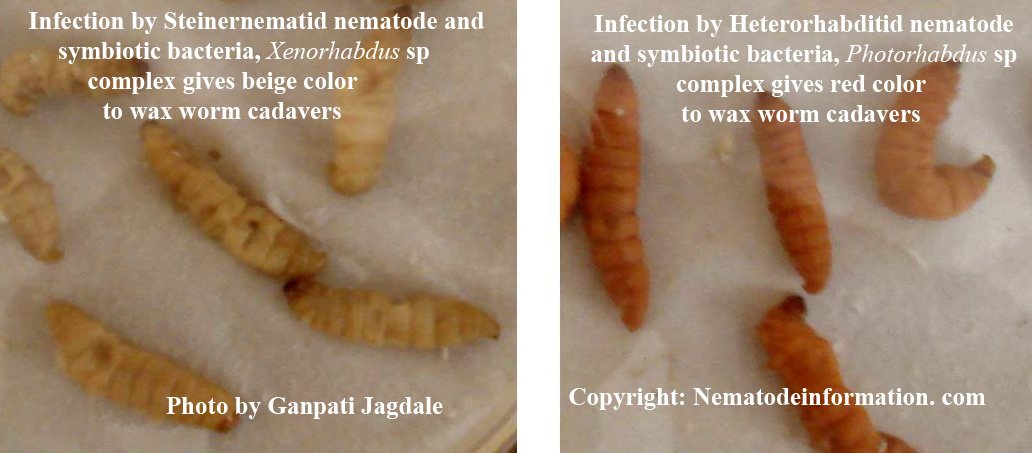Entomopathogenic Nematode Virulence- Nematode information It is well known fact that the infective juveniles of both Steinernema spp. and Heterorhabditis spp. enter their insect host through natural openings such as mouth, anus and spiracles and eventually reach in the insect body cavity. As insects do not have a closed circulatory system like animals, their body cavity acts as an open circulatory system, which is filled with the blood that is technically called as hemolymph. The infective juveniles of Steinernema spp. carry in their gut species specific symbiotic bacteria of the genus, Xenorhabdus whereas the infective juveniles of Heterorhabditis spp. carry in their gut species specific symbiotic bacteria of the genus, Photorhabdus. Once infective juveniles of both Steinernema spp. and Heterorhabditis spp are in the insect body cavity, they release several cells of symbiotic bacteria, Xenorhabdus spp. and Photorhabdus spp., respectively from their gut via anus in the insect blood. Insect blood is conducive for the multiplication of symbiotic bacteria. In the blood, multiplying nematode-bacterium complex causes septicemia and kill their insect host usually within 48 h after infection. Based on color of insect cadaver, we can easily determine which entomopathogenic nematode-symbiotic bacterium complex was responsible for killing the insect pests. For example, as shown in a picture below, infection by entomopathogenic nematode, Steinernema spp. and symbiotic bacteria, Xenorhabdus spp. complex gives beige color to wax worm cadavers whereas infection by entomopathogenic nematode, Heterorhabditis spp. and symbiotic bacteria Photorhabdus spp. complex gives red color to wax worm cadavers.
To enlarge, click the photo
